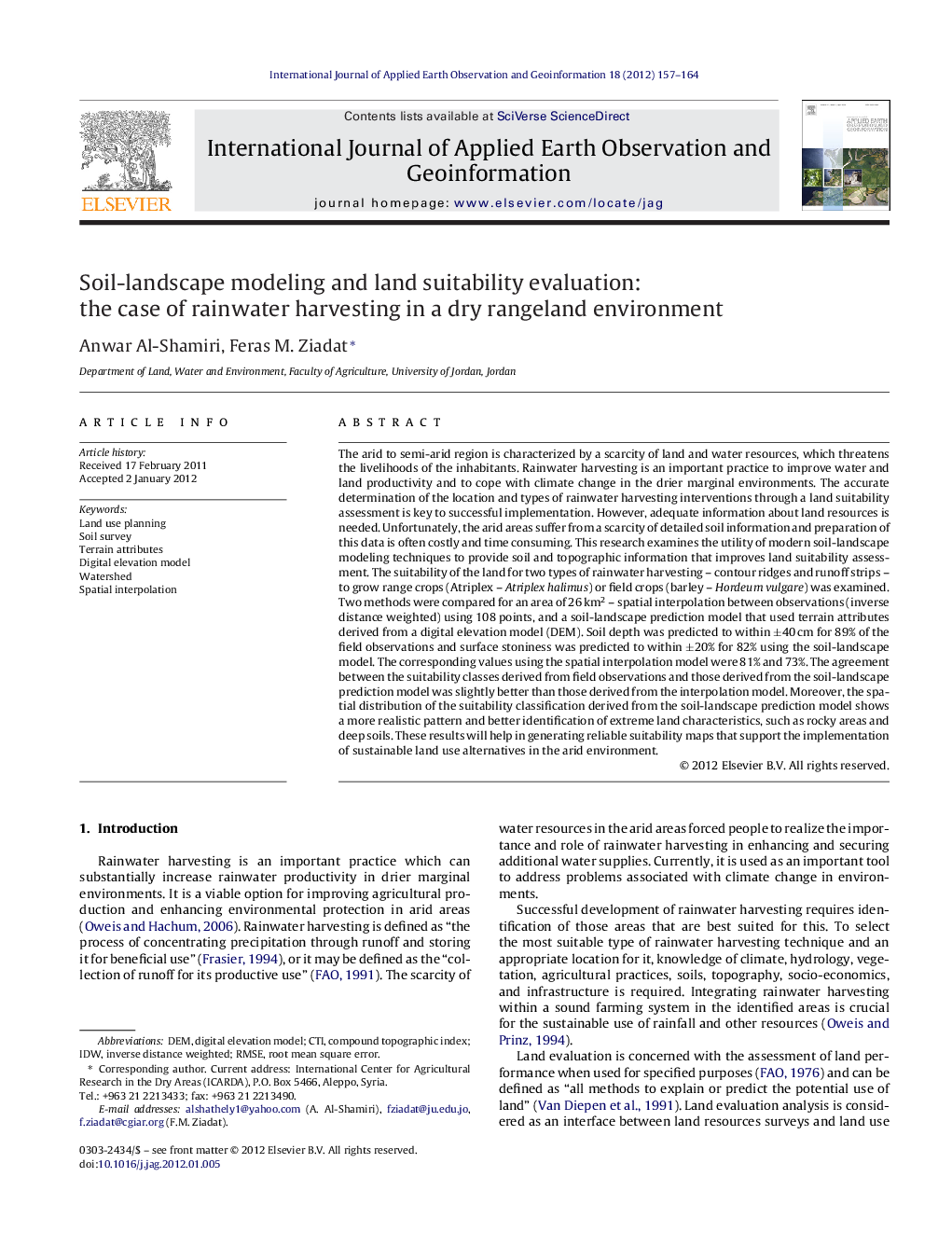| کد مقاله | کد نشریه | سال انتشار | مقاله انگلیسی | نسخه تمام متن |
|---|---|---|---|---|
| 4464921 | 1621842 | 2012 | 8 صفحه PDF | دانلود رایگان |

The arid to semi-arid region is characterized by a scarcity of land and water resources, which threatens the livelihoods of the inhabitants. Rainwater harvesting is an important practice to improve water and land productivity and to cope with climate change in the drier marginal environments. The accurate determination of the location and types of rainwater harvesting interventions through a land suitability assessment is key to successful implementation. However, adequate information about land resources is needed. Unfortunately, the arid areas suffer from a scarcity of detailed soil information and preparation of this data is often costly and time consuming. This research examines the utility of modern soil-landscape modeling techniques to provide soil and topographic information that improves land suitability assessment. The suitability of the land for two types of rainwater harvesting – contour ridges and runoff strips – to grow range crops (Atriplex – Atriplex halimus) or field crops (barley – Hordeum vulgare) was examined. Two methods were compared for an area of 26 km2 – spatial interpolation between observations (inverse distance weighted) using 108 points, and a soil-landscape prediction model that used terrain attributes derived from a digital elevation model (DEM). Soil depth was predicted to within ±40 cm for 89% of the field observations and surface stoniness was predicted to within ±20% for 82% using the soil-landscape model. The corresponding values using the spatial interpolation model were 81% and 73%. The agreement between the suitability classes derived from field observations and those derived from the soil-landscape prediction model was slightly better than those derived from the interpolation model. Moreover, the spatial distribution of the suitability classification derived from the soil-landscape prediction model shows a more realistic pattern and better identification of extreme land characteristics, such as rocky areas and deep soils. These results will help in generating reliable suitability maps that support the implementation of sustainable land use alternatives in the arid environment.
Soil-landscape modeling produces more accurate suitability maps for rainwater harvesting with more realistic spatial representation of suitability units and better detection of extreme soil attributes that determine land suitability.Figure optionsDownload high-quality image (209 K)Download as PowerPoint slideHighlights
► Soil-landscape modeling enabled accurate prediction of soil attribute.
► Soil-landscape modeling produced slightly better suitability maps than spatial interpolation.
► Spatial distribution of suitability classes using soil-landscape modeling was more realistic.
► Soil-landscape modeling provided better detection of extreme land characteristics.
► Sensitivity to number and distribution of field observations needs further investigations.
Journal: International Journal of Applied Earth Observation and Geoinformation - Volume 18, August 2012, Pages 157–164